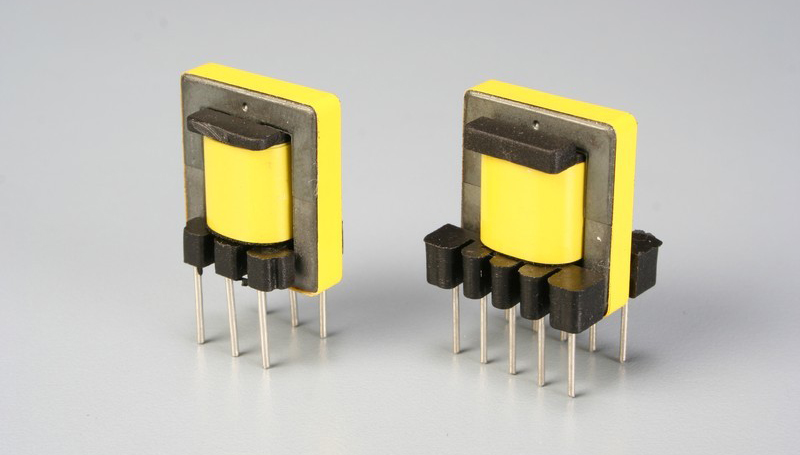Everything about Switch Mode Power Supply Transformers
The ever-growing derive towards smaller and lighter items presents many difficulties for the power supply architects. Specifically, discarding abundance heat created by power semiconductors is turns out to be increasingly troublesome. Subsequently it is significant that the power supply is as small and as proficient as possible, and throughout the years power supply engineers have responded to these difficulties by consistently decreasing the size and improving the productivity of their structures.
Switching power supplies offer higher efficiencies as well as prominent adaptability to the designer. Ongoing advances in semiconductor, magnetic and passive innovations make the switching power supply a preferred option in the power conversion field.
What are switch mode power supply transformers?
A switch mode power supply (SMPS) can be considered as an electronic power supply that integrates a changing controller to convert electrical power effectively. Like other power supplies, a SMPS moves power from a DC or AC source (frequently mains power) to DC loads, for example, a PC, while converting voltage and current qualities. Not at all like a linear power supply, the pass transistor of a
switching-mode supply constantly switches between low-dissipation, full-on and full-off states, and invests next to no time in the high dissipation transitions, which limits wasted energy.
Regulation of Voltage is accomplished by varying the proportion of on-to-off time (otherwise called duty cycles). Conversely, a linear power supply does the regulation of voltage by constantly dissipating power in the pass transistor. This more powerful conversion proficiency is a significant advantage of a switched mode power supply. Switched mode power supplies may also be majorly smaller and lighter than a linear supply because of the smaller size and weight of the transformer.
Switching controllers are utilized as replacements for linear controllers when higher effectiveness, smaller size or lighter weight is needed. They are, however, more complex; their switching currents can cause electrical noise issues if not deliberately suppressed, and simple designs may have a poor power component
Benefits and Limitations of SMPS
The primary advantage of the switching power supply is prominent productivity (up to 96%) than linear regulators in light of the fact that the switching transistor dissipates small power when behaving as a switch.
Other various benefits incorporate smaller size, lower noise, and lighter weight from the elimination of hefty line-frequency transformers, and equivalent generation of the heat. Standby power loss is considerably much less than transformers. The transformer in a switching power supply is also smaller than a customary line recurrence (50 Hz or 60 Hz based on region) transformer, and thus requires smaller amounts of costly crude materials such as copper.
Limitations includes significant complexity, the production of high-amplitude, high-frequency energy that the low-pass channel must be able to block to prevent electromagnetic interference (EMI), a ripple voltage at the switching frequency and the harmonic frequencies.
Extremely low price SMPSs may couple electrical switching noise back onto the mains power line, causing interference with devices associated with a similar phase, for example, A/V equipment. Non-power-factor-corrected SMPSs additionally cause harmonic distortion
Design of the transformer in SMPS
Any type switch mode power supply which takes its power from an AC power line (called a "offline" converter) needs a transformer for galvanic isolation. Some DC-to-DC converters may also incorporate a transformer, in spite of the fact that isolation may not be critical in these cases. Transformers that are associated with SMPS run at high frequencies. The greater part of the cost savings (and space savings) in off-line power supplies result from the smaller size of the high frequencies transformer contrasted with the 50/60 Hz transformers that were used in the past. There are extra structure tradeoffs.
The terminal voltage of a transformer is directly proportional to the product of the core zone, frequency and magnetic flux. By utilizing a lot higher frequency, the core area (and so the mass of the core) can be incredibly decreased. However, losses attached with core increment at higher frequencies. Cores by and large use ferrite material that has a low loss at the high frequencies and high flux densities utilized. The laminated iron cores of lower-frequency (<400 Hz) transformers would be unsuitably lossy at switching frequencies of a couple of kilohertz. Additionally, more energy is lost during changes of the swtiching semiconductor at higher frequencies. Moreover, more thoughtfulness regarding the physical format of the circuit board is required as parasitic becomes important, and the amount of electromagnetic interference will be more pronounced.
Overview:
Switch Mode Power Supply Transformers market will see a boost in the next few years owing to its various benefits over other available similar technology. Switch mode power supply units (PSUs) in domestic items, for example, PCs frequently have universal inputs, implying that they can acknowledge power from mains supplies throughout the world, though a manual voltage range switch might be needed. Switch-mode power supplies can endure a wide scope of power frequencies and voltages.
The capacity of transformers to move and work at a wide range of frequencies lessens the requirement for high frequency transformers. In the same manner, their capacity to have vigorous power conversions makes them ideal for various exceptionally reliable applications, for example, railroad frameworks, industrial machine tools, electric vehicles, security frameworks. Combined with the various use of switching transformers, the various other factors which are already mentioned are projected to boost the demand for switch mode power supply transformers. Additionally, Switch Mode Power Supply transformers offer various other advantageous applications which make them ideal over their counterparts.




Comments
Post a Comment